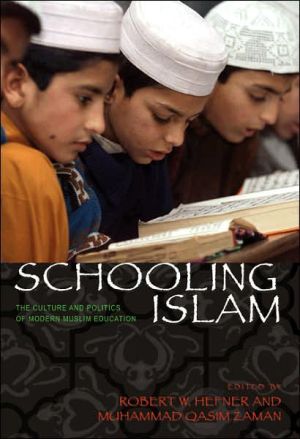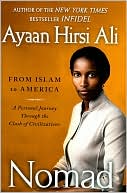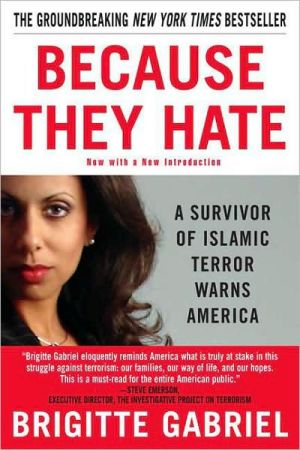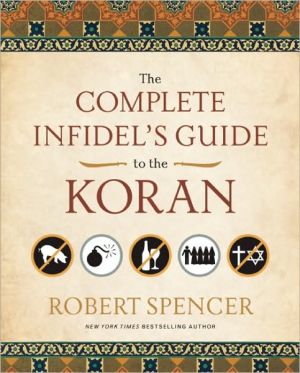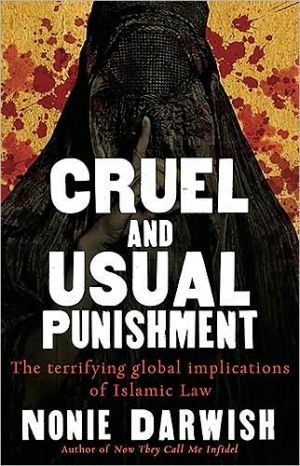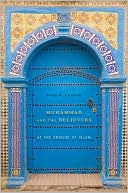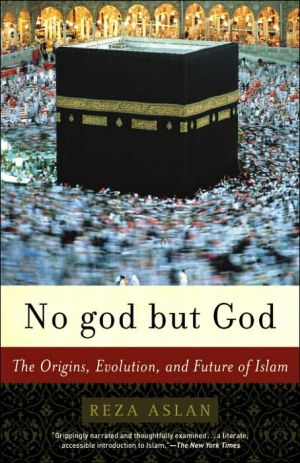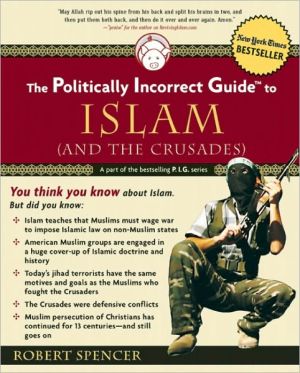Schooling Islam: The Culture and Politics of Modern Muslim Education
Since the Taliban seized Kabul in 1996, the public has grappled with the relationship between Islamic education and radical Islam. Media reports tend to paint madrasas—religious schools dedicated to Islamic learning—as medieval institutions opposed to all that is Western and as breeding grounds for terrorists. Others have claimed that without reforms, Islam and the West are doomed to a clash of civilizations.\ Robert Hefner and Muhammad Qasim Zaman bring together eleven internationally...
Search in google:
"This is a major contribution to the field. Over the past twenty years there has been growing public concern about Islamic education in general and Muslim madrasas in particular. The latter have come to be seen as nurturers of Islamic radicalism, indeed, as training centers for jihadi militants and terrorists. This book makes the enormously important point to those who would wish to essentialize Islam or madrasas that Islamic education is profoundly shaped by local contexts as Muslims seek the best possible ways to grasp, live, and communicate a Muslim life."--Francis Robinson, Royal Holloway, University of London"This book is outstanding in the breadth and maturity of scholarship it assembles on a subject of surpassing importance at once academically and in the wider world of public policy. The editors and contributors lay out a thought-provoking set of studies of educational practices, institutions, intellectual content, and debates about the past, present, and likely futures of Islamic education. The richness of these accounts should put paid to scholarly as well as political stereotyping of Islamic education--from the shibboleths of 'rote learning' to the association of madrasa with terrorism. This book is a must read for all scholars and researchers on Islam."--Jon W. Anderson, Catholic University of America Mohammed M. Aman, Ph.D. - Digest of Middle East Studies Hefner provides the reader with an excellent historical background which can help in appreciating the scale of the change now taking place in Islamic education, and their implications for public culture and politics. . . . This book is highly recommended for American and European media pundits and politicians to read and be honest with themselves and their constituents about the positive nature of mainstream madrasas throughout the Muslim world, and stop demonizing them, and the education they provide.
Schooling Islam\ Modern Muslim Education \ \ Princeton University Press\ Copyright © 2006 Princeton University Press\ All right reserved.\ \ \ \ Chapter One\ Introduction: The Culture, Politics, and Future of Muslim Education \ Robert W. Hefner\ SINCE THE TALIBAN rolled into Kabul on September 26, 1996, Western media have grappled with the question of the nature of Islamic radicalism and its relation to religious education. Several commentators were quick to place much of the blame for the radicals' rise on madrasas, religious schools devoted to the study of Islamic traditions of knowledge. A widely cited article in the New York Times Magazine reported that in Pakistan, "There are one million students studying in the country's 10,000 or so madrasas, and militant Islam is at the core of most of these schools" (Goldberg 2000). Other commentators suspected that an equally militant spirit might lie at the heart of madrasa education everywhere.\ In light of the tumultuous events taking place in some Muslim societies, it is not surprising that some Western commentators were quick to point a finger of blame at this most pivotal of Islamic institutions. After all, the Taliban leadership did emerge out of madrasas located near refugee camps along the Afghan-Pakistan border. In the 1980s, madrasas in these territories grew rapidly in size and influence. Their growth was the result of several factors: a continuing influx of Afghan refugees; the inability of poor Pakistanis to get access to affordable education; and donationsfrom patrons in Pakistan, Saudi Arabia, and the Gulf States-gifts sanctioned, it should be remembered, by American officials intent on rallying support for the anti-Soviet cause (ICG 2002; Zaman 2002, 136). In these difficult circumstances, some Pakistani madrasas did indeed become training centers for jihadi militants. Equally striking, even before the mujahidin victory over the Soviets in Afghanistan, some jihadis turned their aim away from the Soviets to other alleged enemies of Islam. In Pakistan, Sunni militants battled members of the Shi'i minority (see Zaman 2002, and this volume). Others carried out attacks against targets in the Indian-occupied province of Kashmir. Still others set their sights on the United States, taking exception to its policies in the Muslim world.\ Events in Indonesia raised similar concerns about the political effects of madrasa education (Arza, Afrianty, and Hefner, this volume). In the months following the resignation of President Soeharto's authoritarian government in May 1998, hundreds of radical Islamist paramilitaries sprang up in cities and towns across the country. Several boasted of their ties to Islamic schools. In late 2002, a handful among the country's 47,000 Islamic schools were discovered to have had ties to militants responsible for the October 2002 bombings in Bali, in which 202 people died, most of them Western tourists. For many analysts, these and other examples lent credence to the charge that madrasas are "jihad factories" and outposts of a backward-looking medievalism (see e.g. Haqqani 2002).\ Against this troubled backdrop, the contributors to this volume seek to shed light on the culture, practices, and politics of madrasas and Islamic higher education. The authors were participants in a ten-month Working Group on Madrasas and Muslim Education that, with the generous support of the Pew Charitable Trusts and the Institute on Culture, Religion, and World Affairs (CURA) at Boston University, came together in October 2004 and May 2005 to examine the past, present, and likely future of Islamic education. Our concern was not with general or secular education, but with institutions charged with transmitting Islamic knowledge and disciplines. The approach we adopted was comparative and theoretically eclectic, on the assumption that Islamic education is a total social phenomenon, in which knowledge, politics, and social networks interact in a complex and "generative" (Barth 1993, 5, 341) manner. The Working Group was organized with an eye toward interdisciplinary collaboration and included scholars from history, political science, anthropology, religious studies, and education.\ Although the story told by each author in this book is as different as the case study in question, the contributors share two points of view. The first is the conviction that Islamic education is characterized, not by lock-step uniformity, but by a teaming plurality of actors, institutions, and ideas. Islamic schooling is today carried out by government and nongovernment organizations, and its purpose and organization are matters of great debate. At the heart of the dispute lie two important questions: just what is required to live as an observant Muslim in the modern world? And who is qualified to provide instruction in this matter? Disputation of this sort, in which different groups argue publicly about who they are and what their institutions should do, is a clear sign that the madrasa is anything but unchanging or medieval. On the contrary, Islamic education has been drawn squarely into the reflexive questioning and public-cultural debate so characteristic of modern plural societies. Indeed, if there is a struggle for the hearts and minds of Muslims taking place around the world, which there certainly is, madrasas and religious education are on its front line.\ This first point leads to a second. The members of the Working Group felt it important not to allow the sound and fury of recent political events to obscure the fact that this contest for Muslim hearts and minds began well before the Western media rediscovered madrasas in the late 1990s. In Turkey, Egypt, Iran, and India, the debate over Islamic education was already underway two centuries ago. In Southeast Asia and West Africa, the issue has been in the air for over a century. Not surprisingly, then, the central issues in this debate do not concern the Israel-Palestine conflict or American actions in Iraq, but what might at first appear as blandly prosaic matters: whether Islamic schools should teach modern science, provide training in philosophy as well as theology, or offer instruction on modern politics and citizenship. Although their respective positions vary, all sides in these debates are preoccupied with matters of a different nature than those that concerned believers in the Muslim Middle Ages (1000-1500 CE), when the first madrasas came into existence.\ Whatever its roots in Islamic tradition, then, the madrasa is now thoroughly embedded in the modern world. The chapters that follow address the modernity of madrasas and Muslim education from four primary angles. They examine the variety of madrasas and other institutions of Islamic learning; the transformation of madrasas and Islamic higher education under the influence of modern social and intellectual developments; the state's efforts to reform Islamic education; and the future of Islamic education in an age of globalization and pluralization.\ As this last point implies, a particularly important issue with which all of the contributors to this volume are concerned is the question of how Muslim authorities have responded to the distinctive pluralism of our age. This social pluralism differs from that attributed to earlier societies, in which "two or more elements or social orders ... live side by side, yet without mingling, in one political unit" (Furnivall 1944, 446). The plurality that marks our contemporary world is not the colonial and segregationist pluralism Furnivall describes. Today's world is marked by a pervasive "mingling" of peoples, objects, and ideas. Markets, media, and social movements now spill over the boundaries of nations and communities. The spillage makes it impossible to speak, as social theorists once did, of a "society" neatly coinciding with a single "culture," both tied to the same bounded territory (Barth 1993; Hannerz 1992, 262; Hefner 2001). The flow of people and ideas across social borders has fragmented identities, destabilized social hierarchies, and challenged all traditions of knowledge and faith.\ The aim of this introductory chapter is to examine just how these late-modern developments have impacted the forms, transmission, and meanings of Islamic knowledge. To explore this question, we need first to know something of the social milieu in which Islamic education earlier developed. This historical background allows us to appreciate the scale of the changes now taking place in Islamic education, and their implications for public culture and politics.\ The transmission of Islamic knowledge was always dependent on the support of social and political authorities. Embedded as it was in specific social arrangements, religious education changed as the society in which it was located did. The institutions involved in the transmission of Islamic knowledge, however, did not shift with every new wind that blew across the landscape. The traditions with which Muslim scholars ('ulama) were concerned included many viewed as divinely revealed. Scholars and teachers had to balance their efforts to demonstrate the urgent relevance of God's message, then, with a normatively "conservational" (Eickelman 1985, 58) preservation of its eternal truths.\ Striking a balance between conservationalism and relevance has not always been easy. Religious scholars disagreed as to what knowledge should be foregrounded, and to what social ends it should be put. Rulers and viziers also had their own ideas as to the forms and purposes of religious education. Although tensions of this sort have been felt throughout Muslim history, in the modern age they have become not intermittent but chronic. The last two centuries have been marked by the appearance of a powerfully interventionist state, with educational ambitions distinct from those of the 'ulama. The period has also witnessed a heightened pluralism within and beyond the Muslim community. No less significant, our age has been characterized by the unparalleled ascent of Western powers, with their markets, media, and technologies of knowledge. Those involved in the transmission of Islamic disciplines could not but feel the impact of these world-transforming changes.\ In the nineteenth and twentieth centuries, Muslim scholars struggled to come to terms with events that they had not authored and that they could no longer ignore. The answers they devised to their altered circumstance changed the face of Islamic education and society. It is this historical fact that gives Islamic education its importance. Islamic schools are not merely institutions for teaching and training young believers. They are the forges from which will flow the ideas and actors for the Muslim world's future. This book is concerned with the diverse meanings and effects of this effort.\ KNOWLEDGE AS WORSHIP\ The study and transmission of religious knowledge ('ilm) have always been at the heart of Islamic tradition. Islam is a religion of the Book and of religious commentary, and most Muslims regard religious study as a form of worship in its own right. In principle, every Muslim is enjoined to acquire a basic knowledge of God's words and injunctions as revealed in the Qur'an, the canonical words and deeds of the Prophet Muhammad (hadith), and the "path" (shari'a) or the law God has provided as a guide for human conduct. From earliest times, the transmission of knowledge from teacher to disciple also created the network of religious leaders who-in the absence of an initiatic clergy and an institutionalized Church like that of the Christian West-came to exercise religious authority in the Muslim community. Like Aristotle in the ancient world, Muslim authorities also regarded ethical education as essential for the formation of virtuous subjects and the maintenance of a common good (Arjomand 1999, 266; cf. Mahmood 2005, 136). For all these reasons, then, the transmission of religious learning lay at the heart of Muslim civilization, and its support was incumbent on all who aspired to social and political leadership.\ Although the transmission of knowledge has long been central to Islamic culture, the institutions through which this transmission takes place have changed over time. Since the Muslim world's Middle Period or Middle Ages (roughly 1000-1500), the institution most directly involved in the transmission of religious knowledge has been the madrasa, a kind of seminary or "college" for Islamic sciences. Today in the Arabic-speaking Middle East, the term madrasa can refer to a general as well as a religious school. However, in earlier times and in many non-Arabic countries still today, the phrase typically refers to an institution offering intermediate and advanced instruction in the Islamic sciences. The religious subjects with which the madrasa dealt included Qur'an recitation (qira'a), Arabic grammar (nahw), Qur'anic interpretation (tafsir), jurisprudence (fiqh), the sources of the law (usulal-fiqh), and didactic theology (kalam). In a few settings, medieval madrasas also provided instruction in nonreligious topics, including arithmetic, astronomy, medicine, philosophy, and poetry (Bulliet 1994).\ With its emphasis on intermediate and advanced religious study, the madrasa was always distinguished from institutions that provided elementary religious instruction, such as the knowledge required to recite but not understand the Qur'an. Although its name and social form vary, in the Arab world the institution most commonly associated with the latter task was the kuttab. Kuttabs taught youth to memorize and recite the Qur'an, skills regarded as first steps in a scholar's formation (Eickelman 1985, 50, and this volume). Historical evidence indicates that a kuttab-like institution emerged in the first century of the Islamic era, not long after scholars working at the instruction of the Caliphs 'Umar (634-44) and 'Uthman (644-56) completed their recensions of the Qur'an (Bulliet 1994, 28).\ The madrasa developed only three centuries later. The first is thought to have originated in the tenth century, not in the Arab heartland, but in the province of Khurasan in eastern Iran. From there it spread widely, reaching Baghdad in 1063, Damascus in the 1090s, Cairo in the 1170s, and Spain and northern India in the first decades of the thirteenth century (Bulliet 1994, 148-9). In the second half of the eleventh century, the great Seljuq vizier, Nizam al-Mulk, established eleven madrasas in Iraq and Syria (Arjomand 1999, 269-70). By the twelfth century the madrasa had become "perhaps the most characteristic religious institution of the medieval Near Eastern urban landscape" (Berkey 2003, 187; this volume). The institution trained many of Muslim society's leading lights, including jurists, religious scholars, and, in some countries, mathematicians, medical doctors, and astronomers. In all these regards, the madrasa was the central institution of medieval Muslim civil society (Arjomand 1999; Hoexter 2002).\ Prior to the historical emergence of madrasas, advanced study in the religious sciences was already taking place, but it does not appear to have been systematized and standardized to the degree that it would be after the rise of the madrasa. The setting in which advanced study had earlier taken place was the informal study circle or halqa (pl., halaq). Study circles were organized in homes, mosques, or shops under the auspices of a master scholar (shaykh). By the eighth and ninth centuries, the growing complexity of religious knowledge, especially that associated with the legal schools (madhahib) coming into being at this time, meant that advanced learning required more prolonged periods of study (Berkey 1992, 7; Makdisi 1981). In these changed circumstances, mosques specializing in advanced study built hostels for resident students. The tenth-century madrasa took this innovation one step further, providing classrooms, dormitories, and wash rooms for students, all of whom in this early period were male.\ Eventually, the typical madrasa came to include instructional rooms; residences for the founder, teachers, and students; and a mosque, which was used for study as well as worship. Many complexes also had mausoleums, where the school's founder and his relatives were entombed (Hillenbrand 1986, 1,139). Not unlike cults of sainthood in Western Christianity (Brown 1981), these burial complexes became the object of religious pilgrimage (ziyarah) by Muslims convinced that the founder could intercede with God and serve as a channel for divine grace (baraka; see Taylor 1999, 127-67). In modern times, Muslim reformists have prohibited venerational practices of this sort, and madrasas of reformist disposition dispense with the tomb complex entirely (see e.g., Metcalf 1982, 157).\ (Continues...)\ \ \ \ \ Excerpted from Schooling Islam Copyright © 2006 by Princeton University Press . Excerpted by permission.\ All rights reserved. No part of this excerpt may be reproduced or reprinted without permission in writing from the publisher.\ Excerpts are provided by Dial-A-Book Inc. solely for the personal use of visitors to this web site. \ \
Acknowledgments viiA Note on Transliteration and Spelling ixContributors xiIntroduction: The Culture, Politics, and Future of Muslim Education Robert W. Hefner 1Madrasas Medieval and Modern: Politics, Education, and the Problem of Muslim Identity Jonathan P. Berkey 40Tradition and Authority in Deobandi Madrasas of South Asia Muhammad Qasim Zaman 61Madrasas and Minorities in Secular India Barbara Metcalf 87The "Recentering" of Religious Knowledge and Discourse: The Case of al-Azhar in Twentieth-Century Egypt Malika Zeghal 107Madrasas in Morocco: Their Vanishing Public Role Dale F. Eickelman 131Islam and Education in Secular Turkey: State Policies and the Emergence of the Fethullah Gulen Group Bekim Agai 149Pesantren and Madrasa: Muslim Schools and National Ideals in Indonesia Azyumardi Azra Dina Afrianty Robert W. Hefner 172The Transformation of Muslim Schooling in Mali: The Madrasa as an Institution of Social and Religious Mediation Louis Brenner 199Islamic Education in Britain: Approaches to Religious Knowledge in a Pluralistic Society Peter Mandaville 224Epilogue:Competing Conceptions of Religious Education Muhammad Qasim Zaman 242Index 269
\ Digest of Middle East Studies - Mohammed M. Aman\ Hefner provides the reader with an excellent historical background which can help in appreciating the scale of the change now taking place in Islamic education, and their implications for public culture and politics. . . . This book is highly recommended for American and European media pundits and politicians to read and be honest with themselves and their constituents about the positive nature of mainstream madrasas throughout the Muslim world, and stop demonizing them, and the education they provide.\ \ \ \ \ Digest of Middle East StudiesHefner provides the reader with an excellent historical background which can help in appreciating the scale of the change now taking place in Islamic education, and their implications for public culture and politics. . . . This book is highly recommended for American and European media pundits and politicians to read and be honest with themselves and their constituents about the positive nature of mainstream madrasas throughout the Muslim world, and stop demonizing them, and the education they provide.\ — Mohammed M. Aman, Ph.D.\ \
